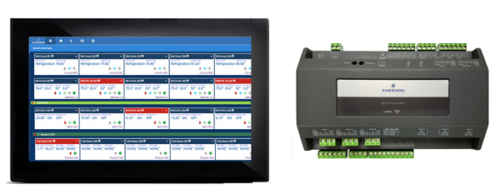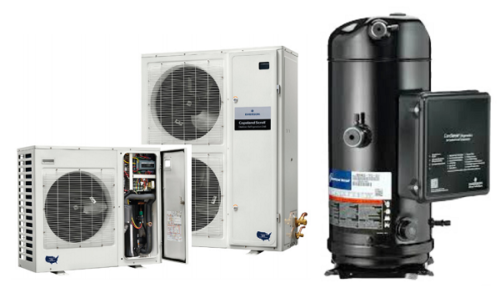By Ben Picker
Copeland Product Manager, Condensing Units
Emerson

Today’s commercial refrigeration industry is facing a confluence of challenges. Chief among these are a surplus of regulations, a shortage of qualified technicians, and a consumer base demanding fresh, premium quality foods. And while supermarket, restaurant, mixed retail and convenience store operators try to sort out these complexities, they’re also tasked with driving profitability.
In recent years, commercial refrigeration manufacturers have stepped up their efforts to develop technological solutions that help store operators achieve compliance, sustainability and profitability
goals. With so many seemingly new technologies emerging in this uncertain regulatory climate, operators have many opportunities to leverage these technologies and address a wide range of challenges.
The pervasiveness of electronic controls
The first key pillar of commercial refrigeration transformation is the use of electronic controls at the individual component, system and facility/supervisory levels. While each has very specific purposes, they’re designed to serve as the brains of the new equipment, typically relying on sensors to measure
an environmental condition or mechanical operation. This provides operators with the tools to perform a variety of critical tasks, from continual monitoring and automated reporting to diagnostics, troubleshooting and corrective actions.
Let’s look closer at the different levels of electronic controls:

Component controls: integrate with a single component — such as a compressor or door heater — to maintain efficient operations and diagnose issues that would not be possible without electronics.

System controls: operate multiple components within a system — such as a valve, compressor and fan — to control, direct and optimize system-level efficiencies. Both component and system controls can work independently or connect with other controls for system-level communications.

Supervisory controls: coordinate the operation of multiple systems — such as refrigeration, HVAC and lighting — allowing component- and system-level controls to communicate their conditions and store operators or technicians to assess system status and monitor overall facility operations. More advanced
controls are equipped to make system changes as conditions warrant.
The emergence of electro-mechanical components
The second important technological development is the emergence of new electro-mechanical components that perform specific functions within the refrigeration cycle, including compressors, valves
and fans. These are either designed to be self-contained to combine electronics and the components in a pre-assembled package, or as two separate components that are installed together, depending on
the type of control or component.

Scroll compressors combine multi-refrigerant capabilities with reliable operation and energy efficiency.
On the other hand, scroll compression technology doesn’t necessarily need electronic controls to address many operator challenges. Scroll’s inherent benefits combine multi-refrigerant
capabilities with reliable operation and energy efficiency. The addition of controls helps to take scroll compressor benefits to the next level.


























